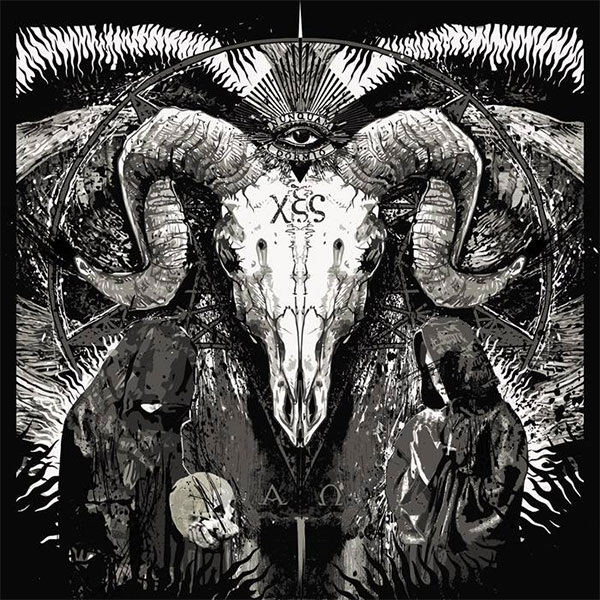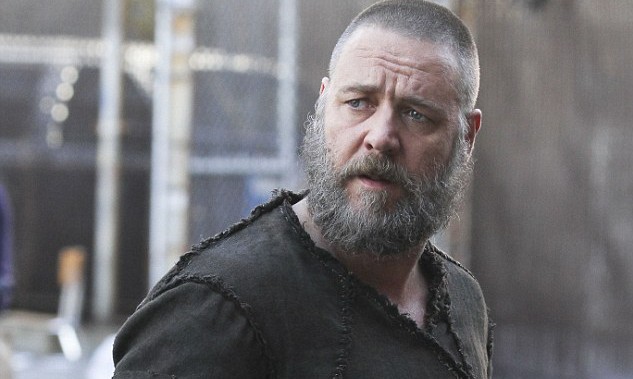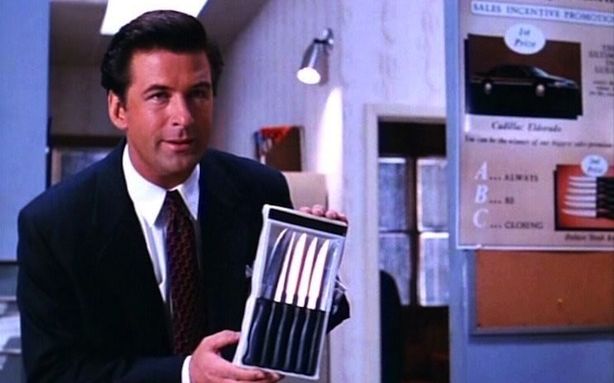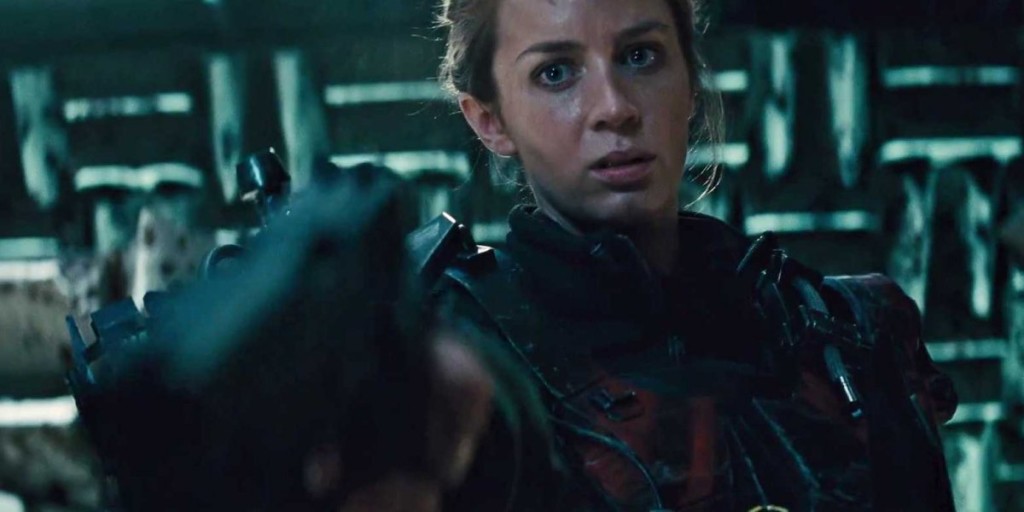Genre: TV Pilot – Horror/Procedural
Premise: When the Governor’s daughter goes missing, the FBI believes the Occult may be involved.
About: This project was shepherded by Michael Bay, with X-Files alum James Wong writing. The multi-talented Wong also produced and wrote Final Destination 3, and wrote for American Horror Story. The project was set up at A&E, who ultimately passed on it, despite Josh Lucas starring. See, this is what I don’t understand about TV. You have Michael Bay shepherding a project. A guy who’s responsible for the 5th biggest franchise of the past decade. You have a movie star in the lead role. And a tiny network like A&E says, “Ehh, not interested.” Is this because it’s understood Bay is only adding his name to the show and not actually involved? What’s the reasoning here? TV guys? Help. I guess the show could’ve just been bad. But it sounds pretty cool. I guess it’s time to find out the truth.
Writer: James Wong
Details: 7-26-2012 draft (5th draft) – 52 pages
A&E seems unsure about how far they want to dip their toes in the scripted waters. The network known for reality hits Duck Dynasty, Storage Wars and Hoarders, only has one scripted show that I’ve ever heard of, the well-received “Bates Motel.” It’s only other show, a dark-looking drama starring Chloë Sevigny called “Those Who Kill,” was recently shuttered off to its sister network, LMN, which I’m guessing you’ve never heard of. Cause I sure haven’t.
That makes me believe Occult never had a shot at getting on the air in the first pace. Which is too bad. Because it sounds interesting and Wong is an established writer. Let’s see if a good show got the shaft from a network who wimped out of the scripted television derby, or if the script was never up to snuff in the first place.
We’re in New Orleans (where everything seems to be set these days – ever since they started offering all those filmmaking tax breaks), and LSU student and Governor’s daughter Alana Hutchins is out partying. She leaves the club with Abercrombie Model Dude, and while they’re walking to their cars, someone jumps out of the forest and snatches Alana away. Uh oh.
Naturally, the New Orleans FBI unit is all over this. So much so that they bring back suspended agent Dolan, a guy with a mysterious past (if you’re writing a TV show, at least one of your leads better have a mysterious past!). They team Dolan up with Bureau headache Noa Blair, a woman obsessed with the Occult. It’s her opinion that these naughty demon-worshipping clans had something to do with this.
Sure enough, Blair and Dolan happen upon an Occult sacrifice ritual, which they’re able to stop, but not before a strange feeling hits Dolan. What Dolan doesn’t know is that he’s just been possessed. Not the best form to be in when you still haven’t found your victim. That’s right, the sacrificial lamb of the ritual was yet another woman. Alana is still missing!
The duo follows a couple of basic leads (some credit card purchases, old acquaintances) and eventually runs into this guy who speaks a language that doesn’t even exist! While Dolan continues to feel stranger and stranger (he starts experiencing things that may or may not be real), Blair uses Mr. Gibberish to figure out where Alana is, who they’re able to save, just in time.
Blair then uses her face time with the Governor to ask for a special Occult Crimes Unit on the FBI. Request granted. And thus, our series begins.
These procedural dealios are tough. They’re a little easier to pull off in movie form, I feel, because you only have to come up with one big snazzy story. You can really take your time and figure out a way to make the investigation special.
But with procedural TV, you have to do it week in and week out. There are only so many ways to have your characters follow Lead A to Lead B to Lead C, and finally find the killer. Which is why I don’t generally like these shows. Once you’ve seen about five episodes of the genre, you’ve seen them all. From then on, it’s the same old shit.
That’s why I liked Silence of the Lambs so much. It wasn’t your typical “Lead A to Lead B to Lead C” scenario. They had this X-Factor in Hannibal who you weren’t used to. That rhythm of following leads was thrown off by the fact that Hannibal was giving our hero advice, and after awhile, taking center stage in the story. At a certain point, you weren’t sure if you cared more about Hannibal’s storyline or Clarice’s. It was different. It was fresh.
On the TV end, that’s the trick you’re looking for. Think of a spin on the genre that’s different enough that all those “old” scenarios become new again. “Occult” attempts to do this by having a demon possess one of its main characters, Dolan. Now, whenever the partners come onto a scene, there’s this x-factor of Dolan being able to sense things, being able to use his possession to discover clues. The question becomes, is that enough?
I don’t think so. Actually, it kind of backfires. I like it when characters have to figure shit out themselves, when the odds are stacked against them and the only way for them to thrive is to outsmart the baddies. When information is just handily given to them via the demon’s powers, it’s kind of boring and feels like a cheat. It erases all the drama from the scene. “Oh, the clue is over there.” How is that interesting?
In other words, Occult stays a lot closer to the traditional format than it tries to invent a new one. And this is something I’ve actually been battling lately. More and more people are sending me pilots, and a lot of them feel like shows I’ve already seen a thousand times before.
Just the other day, for example, someone sent me a sitcom about family life, and my big note to him was that it felt too familiar. That we weren’t breaking any new ground. If he wanted to stand out, he needed something fresh.
But a few minutes later I turned on the TV and saw an ad for “The Millers,” a show about a grown man living with his parents. In other words, the same sitcom they’ve been making for the past 20 years. I thought, “Do I have it wrong?” Maybe TV audiences enjoy that comforting familiarity a familiar set-up brings. It certainly makes it easier to relate to the characters and the situations.
The more I thought about it, the more I could see that making sense to TV people. With a movie, you have to physically get up and drive to the theater (and pay money!). So they have to give you something new and exciting to entice you. But with TV, the viewer is already on the couch. They don’t have to go anywhere. And it’s free. So maybe familiarity IS the best route? I don’t know. You TV folks looking for new shows, help me out here.
Whatever the case, all I can say about Occult is that I wasn’t drawn into it because of its familiarity. It was yet another straight-forward procedural. I wanted that HBI – that hot beef injection of something unique that made the show stand out. The occult stuff sort of did that. But it wasn’t game-changing enough to disrupt the typical “Lead A to Lead B to Lead C” formula.
Now keep in mind, I don’t watch procedurals. I don’t watch CSI or NCIS or LFYK. So I may not be the target audience here. But my gut tells me this needed something extra to make it worth going to series for.
[ ] what the hell did I just read?
[x] wasn’t for me
[ ] worth the read
[ ] impressive
[ ] genius
What I learned: Whatever TV show you’re thinking of writing, create a setting, or give the concept a twist, that makes every situation we’re used to seeing in these shows feel fresh. For example, in Pushing Daisies, the main character was able to bring the dead back to life for a minute. That made every single procedural episode different from what we’ve seen before – our detectives could actually communicate with the dead victim of every crime. It’s my belief that this gives you a better shot at selling your pilot than if you give them the same ole same ole.
Genre: Religious Epic/Action
Premise: (from IMDB) A man is chosen by God to undertake a momentous mission of rescue before an apocalyptic flood destroys the world.
About: Noah was written and directed by Darren Aronofsky (Black Swan, The Wrestler) and co-written by Ari Handal. As most religious pictures do, this film is dividing audiences, most of whom haven’t even seen it (I love when the religious community does this – “Don’t go see this!” “Have you seen it?” “Uhh, no. But that’s irrelevant!”). Ari Handel is a longtime Aronofsky collaborator. He received a “story by” credit for Aronofsky’s most ambitious film, The Fountain, but Noah is his first full screenplay credit. Predictions for Noah’s box office this past weekend were all over the map, with many predicting it would tank big time. But the film did a respectable 45 million dollars.
Writers: Darren Aronofsky and Ari Handel (based on the book “The Bible” written by Moses, David, Ethan and others).
Details: 262 pages!!!!!!!!! (without pictures, about 130 pages) — early draft
Awhile back I said, “Don’t write ‘religious’ scripts. They don’t sell.” Then ‘religious projects’ become all the rage. Should we chalk that up to the, “Nobody knows anything,” William Goldman quote that writers use in defense of all their strange ideas? “I’m going to continue to push my coming-of-age story about a man frustrated with his 20s because… nobody knows anything!” No offense but, don’t do that. Please.
Here’s how Hollywood works. One day, nobody’s buying religious scripts. Then a huge director who’s had a nice little streak going – somebody like Darren Aronofsky – says he wants to make a big Noah epic. Everybody’s a little nervous but no one wants to say no to a talent like Aronofsky so they say, “Okay, I guess we can jump on board with that.”
The news circulates around town that Aronofsky’s next movie is a big religious epic, and all of a sudden, guess what? It’s okay to buy big religious epics! Whether the other studios want competing projects, or to be prepared if Noah succeeds so they can jump on the heat, they buy these scripts and start developing them.
My point is – there IS some logic to it. It’s not like one day everyone starts buying religious specs because “Nobody knows anything.” There’s almost always a cause and effect going on.
Which leads us back to “Noah” and its heaping 262 page retelling of the epic story (well, not really 262 pages. There are a lot of weird pictures in it and if you take those out, it’s only about 130 pages). I should preface this by saying I’ve never read the Bible and, in fact, had my Sunday School teacher come to my parents and tell them, “I don’t think this boy should be in Sunday School anymore.” In other words, I’ve been officially rejected by God. This very well may factor into my review.
So in Aronofsky’s version of “Noah,” we have a guy named Noah. Noah is a tree-hugger. He hates how careless we’ve become with our land. Not only are we knocking everything down and dispersing our trash everywhere, but we’re killing all our animals too! Noah, it turns out, is also a big-time vegetarian. He refuses to munch the meat.
Noah preaches this gospel to his family, two boys (Shem and Ham), a baby girl, and an adopted girl, Ila, who was left for dead after her village was slaughtered. Everyone looks up to Noah so they follow in line, even when he claims to have been contacted by God, who happened to mention that he’s going to destroy the world.
Noah believes he’s been chosen to save all the animals on the planet, so he convinces his family to build an animal Ark for when the floods come. Since this takes up the majority of his time, Noah’s unaware that Ila takes a liking to his son, Shem. Possibly because Noah’s such an animal freak, Shem and Ila learn about the birds and the bees, and the next thing you know: preggers!
While Noah’s building the Ark, an evil warlord named Akkad keeps bothering him for a spot on his boat, going so far as to sick his army on the resistant Noah. Thing is, Noah’s buddies are these huge 6-armed monster things who ward Akkad’s army off.
But eventually the rains come and Akkad is able to get on the ship as it shoots off to sea. It’s here where Noah has another vision – this one that he needs to kill his family off (in a very humane, systematic way of course) so that there will be no more humans on the planet, just animals. It’s a grand plan, but ruined when he finds out that Ila is pregnant with his grandchild. Will Noah finally come around? Or will he stop humanity by killing off his only grandkid? Oh yeah, and what about that Akkad guy? What nasty things does he have in store? Check out “Noah” to find out.
I’ll be the first to admit that Aronofsky is one of those filmmakers who brings so much to the table stylistically, that you can’t judge his scripts the same way you can judge scripts like “Non-stop.” You really have to see an Aronofsky film to make a final judgment. However, I do have some thoughts on the script itself.
First off though, I have some questions for the religious folks. Do people really believe that the earth used to have giants and 6-armed monsters and talking snakes? Why did these things die off and why isn’t there any evidence of them? I guess they may have died off in this flood? Is that the story? Still, if animals used to be able to talk, why can’t they talk anymore? Do religious folks have an answer to this? I have to be honest, it all sounds a little silly to me.
But even if you can get past that, “Noah” is still a strange read. Noah himself is kind of a nut bag. He has a nice little Save the Cats moment early on (yup, I did the plural thing – cause it’s Noah) where he saves this Bison from sure death. And his general attitude towards animals makes us feel all warm and fuzzy towards the bearded one.
But dude, what’s up with wanting to kill your family off? Don’t you think that’s a little extreme? There’s this moment that comes in every script where your main character has “the choice.” It’s the most difficult choice he’ll ever be presented with in life – his “Sophie’s Choice,” if you will – and it should include the thing he cares most about and the thing that is ultimately right.
So here, when Ila’s babies are born (spoiler alert – she has twins!), Noah can either kill them (so there will be no more chance of reproduction) or let them live. He believes so much in a human-free world, that he really really really wants to kill his grandchildren. But in the end, he just can’t.
Here’s my problem with this choice – we know there’s no way in Hell that Noah’s going to kill two babies. He just isn’t. So the choice is devoid of any drama. And I think this problem stems from giving Noah a ridiculous stance to begin with – the guy wants to kill off his own family??? Come on. No audience is ever going to believe that Noah’s capable of doing such a thing. Therefore, any further story elements that try to build off of this are bound to fail.
The structure for this script was also really wonky. The first 70 pages (35 pages w/o pictures) are dedicated to getting to know Noah and his family. We then jump forward 10 years, and the Ark is 80% finished. Then at around page 150 (roughly page 80 w/o pictures), we’re off in our Ark.
Since, up to that point, most of the script was about building the Ark, the story has to reset. Where does it go from here? What’s the engine that’s driving it? Unfortunately, nothing really. They only kind of try to look for land. Therefore it becomes all about Ila’s pregnancy. And, as I stated above, that storyline doesn’t hold any water.
To be honest, this story was going to be a clusterfrick to wrangle in no matter what they did. The building of the Ark was always going to take a long time, forcing the screenwriters to condense time whenever possible. And whenever you condense time, you impose an artificiality onto the story. You can get away with it a couple of times. And you can use tricks to distract us from time jumps (Forrest Gump does a good job of this). But at a certain point, if you have too many jumps, the script starts to feel like a broken record, scratching and sputtering and starting back up again.
That was my problem here. There was no rhythm to the story. They probably should have gone to one extreme or the other. Either make the entire script about building the Ark, with the climax being the beginnings of the rain, or get them on that Ark by the end of the first act, and then build a story around them on the sea (probably trying to find land again). Aronofsky tried to do both, and I think that was its undoing.
I will give this to Aronofsky: He did something different. I would much rather see this movie than the super-safe G-rated Bible Belt Productions version of Noah, where everyone would have been squeaky clean and perfect. These characters here had a lot of baggage to hold onto, and that at least made them readable. Still, the weird structure, the half-fantasy element, combined with a psychopathic Noah turned me off.
[ ] what the hell did I just read?
[x] wasn’t for me
[ ] worth the read
[ ] impressive
[ ] genius
What I learned: Try to avoid writing scripts where your story completely reboots. “Noah” was so focused on one thing in the beginning (building this Ark), that the story lost its footing once it moved past that. No pun attended, but after that boat left the dock, this script was lost at sea.
What I learned 2: If you’re going to include pictures in your script, make sure their presentation looks professional. This is the second script I’ve read this month that had pictures in it, and in both cases, the pictures are haphazardly thrown up onto the page. It looks sloppy, which makes the script look sloppy. Use some uniformity, some placement plan, some technique. It goes a long way.
This is your chance to discuss the week’s amateur scripts, offered originally in the Scriptshadow newsletter. The primary goal for this discussion is to find out which script(s) is the best candidate for a future Amateur Friday review. The secondary goal is to keep things positive in the comments with constructive criticism.
Below are the scripts up for review, along with the download links. Want to receive the scripts early? Head over to the Contact page, e-mail us, and “Opt In” to the newsletter.
Happy reading!
TITLE: Man Cave
GENRE: Comedy
LOGLINE: Three downtrodden buddies lie to their overbearing wives and set off on a quest to watch the big game, but their journey goes awry when the women discover their plan and hunt them down.
WHY YOU SHOULD READ: Sometimes a dude just wants to take a night off from the wife and/or kids. Meet up with his bros. Have a beer. Watch the game. And sometimes the wife and/or kids do not want that to happen. This is the story of a few friends who try anyway. God help them.
TITLE: Orion’s Flight
GENRE: Action/Thriller
LOGLINE: When a governmental Space Station gets taken by a terrorist organisation its once headstrong Architect must escape upon learning that the terrorists have also captured her disabled husband back on earth.
WHY YOU SHOULD READ: I’m going to pitch this as ALIEN MEETS DIE HARD in that a strong female protagonist is trapped on a space station while trying to avoid/defeat a stronger, better equipped foe. This wasn’t written to win Oscars or Nicholl contests, but to entertain those seeking an adrenaline rush and a bit of fun.
GENRE: Horror
LOGLINE: A psychopathic survivalist lures his neighbors into his secret bunker when the national power grid goes down.
WHY YOU SHOULD READ IT: Are you and your family prepared to survive for weeks or months on end if the grid goes down and all the stores close? Like most movie going Americans, our hero, Bobby Murphy and his loving family weren’t ready for societal collapse and soon found themselves at the mercy of those who were like our villian Ray McKlusky. I would describe Ray as Hannibal Lecter meets the Joker at Duck Dynasty’s house. Like many of you, I have been at this for many years passionately honing my skills. While Prepper may appear to be just a popcorn flick/script, it was crafted with care and profoundly inspired.
Earlier this week, I broke down Do The Right Thing, with a focus on dialogue. I’m fascinated by dialogue as it continues to be one of the most elusive aspects of screenwriting. There are a small percentage of writers out there who are so gifted in this area that they don’t need any help. But chances are, you’re not one of them. And you’re never going to be. I’m sorry, but it’s the truth. People who were born with that gift are no different from basketball players with a 50 inch vertical. No matter how hard you work at it, you’re never going to have a 50 inch vertical.
But here’s the good news, just like there are a hundred NBA players who don’t have a 50 inch vertical, there are hundreds of screenwriters making a living who aren’t great at dialogue. Wanna know the secret to how they survive? They know how to put their characters in situations that create INTERESTING dialogue. Note the difference. “Great” dialogue is David Mamet. It’s creating something out of nothing like he did with Alec Baldwin’s monologue in Glengarry Glen Ross: “Cause the good news is — you’re fired. The bad news is you’ve got, all you got, just one week to regain your jobs, starting tonight. Starting with tonight’s sit. Oh, have I got your attention now? Good. ‘Cause we’re adding a little something to this month’s sales’ contest. As you all know, first prize is a Cadillac Eldorado. Anyone want to see second prize? Second prize’s a set of steak knives. Third prize is you’re fired. You get the picture? You’re laughing now? You got leads. Mitch and Murray paid good money. Get their names to sell them! You can’t close the leads you’re given, you can’t close shit, you ARE shit, hit the bricks pal and beat it ’cause you are going out!!!”
But you don’t need to be David Mamet to succeed. You just need to create dialogue that keeps us interested. And the best way to do that is to set your dialogue up to succeed. Give your characters a situation that will ALLOW them to say interesting things. Almost all of this happens long before your scenes are written. You do it, by and large, by creating characters that naturally interact with each other in dramatic ways. Below, you’ll find 10 approaches to scene-writing that, if done right, should improve your dialogue dramatically. 90% of your scenes (or more) should include one of the following set-ups.
HEAD-BUTTING
One of the most obvious ways to create interesting dialogue is through conflict – having your characters butt heads. How intensely they butt heads will depend on the characters, the story and the individual situation. The most obvious form of this is “arguing.” Characters let loose and rail against one another. Be careful with these scenes though. They typically only work after the pressure has been building up for a long time. If your characters argue right away (although there are exceptions to this) it will feel “on-the-nose” to the reader. And remember, full-on arguing isn’t the only “conflict” option. Sometimes a simple disagreement can be enough to power a scene.
TENSION
Tension is like conflict’s little cousin. It resides right underneath the surface. As such, it’s often a precursor to head-butting. Look at “The Heat,” with Sandra Bullock and Melissa McCarthy. Or Han Solo and Obi-Wan Kenobi in Star Wars. Or Columbus and Tallahassee in Zombieland. There’s tension between all these characters. Sometimes it bubbles up into full on head-butting, but usually it’s like an annoying little mosquito in a tent buzzing in the character’s ear. Needless to say, the pent-up frustration this tension causes always works its way into dialogue in interesting ways.
SEXUAL TENSION
One of the easiest ways to write scenes is to have some sort of sexual tension between your hero and the romantic interest. Sexual tension only works, though, until your characters seal the deal (with a kiss, or sleep together, depending on what type of story it is). Sexual tension can occur in a single scene, such as when Will Hunting tries to pick up Skylar at the bar in Good Will Hunting, or it can drive a multitude of scenes and even an entire movie, like it does in When Harry Met Sally.
SUSPENSE
Tease the reader with something they want, then don’t give it to’em right away. Here’s a scenario that shows the power of suspense. Let’s say our hero, Dan The Detective, shows up at a murder scene. Just before he walks in the house, he gets a call from his wife. She reminds him that he needs to pick up their son after school. She asks if everything’s okay. They discuss a few more things. He finally hangs up and goes inside. Boring right? Here’s how to use suspense. When Dan shows up, have a cop come up to him, face white, shaking his head, and tell Dan that what he’s about to see inside is unlike anything he’s seen in 30 years on the force. “You’re not ready for this,” he tells Dan. Dan, and us, start to go inside, but oh no, Dan’s wife calls! The two have the exact same conversation as before. This time, though, the dialogue feels more alive for some reason. Why? Because of our anticipation. Because we can’t wait to see what’s inside.
RESISTANCE
Resistance is when one character wants something and another character doesn’t want to give it up. One of the most famous examples of this happens in Raiders of the Lost Ark, when Indy goes to get the medallion from Marion. But guess what? She doesn’t want to give it up. In The Avengers, Black Widow tries to convince Bruce Banner to join the Avengers team. He doesn’t want to. In Fargo, Marge wants to get those license plate numbers from Jerry Lundergaard (who doesn’t want to give them to her because he’s secretly stolen the cars). If you want to double the power of Resistance in a scene, have both characters want something and have both sides resist. In the Alec Baldwin Glengarry Glen Ross scene mentioned above, Baldwin wants to give his damn speech. But nobody wants to listen. Also, everybody wants those golden Glengarry Glen Ross leads, but Baldwin doesn’t want to give them away. Resistance is a powerful way to keep dialogue interesting and should be used in the majority of your scenes.
AVOIDANCE
Avoidance is when characters don’t talk about things that need to be talked about. You’ll use Avoidance most often with characters who’ve known each other for awhile. Girlfriends, boyfriends, husbands, wives, family in general. As we all know, people in any relationship get to a point where they’d rather bury their problems than deal with them. When these people talk to each other, you can feel their words dripping with subtext. One need only sit at a family dinner to know how to write one of these scenes. There are usually many things that people are thinking that they’re not saying for one reason or another. Often, they’ll talk about anything else to fill the silence.
CHARACTER DRAMATIC IRONY
Dramatic Irony is a fancy way of saying “someone’s got a secret.” So all you’ve gotta do is write a scene with two characters, where one of the characters is keeping a secret from the other. In other words, almost every scene from Breaking Bad. Walter is keeping from his wife, his kid and his brother-in-law, that he’s a drug dealer. So whenever he has conversations with them, we’re drawn in. It can also be scene specific. In Inception, when Cobb approaches Robert Fischer (once he’s inside Robert’s mind), Cobb’s secret is that he’s trying place information inside Fischer’s mind. Dramatic Irony scenes tend to be the most interesting, however, when it’s the “bad guy” who has the secret. Because in these cases, we’re worried for our hero’s safety. So in Die Hard, when John McClane meets Hans Gruber up on the roof and Hans pretends to be a hostage, we know Gruber’s secret, and are terrified it’s going to result in our hero’s death.
STORY DRAMATIC IRONY
This second version of dramatic irony is the famous Hitchcock example of a bomb under the table. It occurs not when the characters keep secrets from each other, but when the movie keeps a secret from its characters. You’ll see this in horror movies a lot. Imagine a happy couple enjoying a hike through the forest. Chances are, their conversation is going to be pretty boring. But let’s say at the beginning of their hike, we cut to deep in the forest where a crazed maniac with an axe is watching them. When we cut back to them talking, it’s going to be a lot more interesting, isn’t it? We’re worried for them and want them to find out about the psychopath.
COMEDY
One of the ways to make a scene interesting is to make it funny. Have the characters talk about funny things. Seth Rogen and James Franco talking about joints in Pineapple Express. Or in a romantic comedy, when the characters first start hanging out together. This Honeymoon Period should contain a lot of funny dialogue. But beware of resting on comedy alone to sell a scene. If you’re just trying to make your characters say funny shit, we’ll feel the pointlessness of the scene and start to get restless. Often, comedy should be coupled with one of the other options I’ve listed. For example, a lot of the humor in The Hangover doesn’t come from Alan (Zach Galifianakis) and Stu (Ed Helms) just trying to say funny things. It comes from the fact that there’s so much tension between them, from them always butting heads. Also, it should go without saying that if your script is heavily dependent on comedy scenes, you need to be sharp, witty, clever, and funny. This may seem obvious, but I’ve read upwards of 200 amateur comedies where I didn’t laugh once.
PHILOSOPHY
These scenes involve characters talking about fascinating shit. The scenes’ strength rests on how compelling that shit is. Have you heard of something cool you’ve never heard anybody else discuss before? Have you thought of something crazy that nobody else has thought of? Use your characters to introduce these ideas to the world. Potential subjects include God, UFOS, death, life, conspiracies, existentialism, philosophy. These scenes should contain the kind of dialogue that if someone were sitting nearby in a coffee shop, they’d drop what they were doing to listen in. Richard Linklater has become famous for this kind of dialogue in his Before Sunrise movies, Slacker and Waking Life. Woody Allen incorporates it into his scripts as well. It should be noted, however, that this dialogue is really hard to pull off. Most people who think they have interesting thoughts about the world just rehash the same stuff we’ve heard in a hundred other movies (or on the internet). Sure, when it’s done right, we get Before Sunrise. But when it’s done badly, we get Scenic Route. What’s Scenic Route? Exactly.
EXPOSITION SCENES
I’m including these scenes for one reason – because I don’t want you to write them. You should try to avoid, with all your might, writing scenes that are solely dedicated to exposition or backstory. Why? Because exposition and backstory are boring. Instead, break your exposition up into pieces and hide it inside all the other types of scenes I’ve mentioned. I admit this becomes harder to do for fantasy and sci-fi scripts though. With these films, there’s so much more information that needs to be given to the reader, that it’s tempting to write a scene that takes care of all of it. In these cases, just make sure that the exposition is really freaking interesting, like when we learn about the matrix in The Matrix. But I’m telling you, if you have more than even one of these scenes in your script, your reader’s already getting bored.
IN SUMMARY
When I read bad scripts, it’s often because there’s no conflict, no tension, no suspense, no dramatic irony. I’ve actually read hundreds of scripts that didn’t have a SINGLE scene with any of these things in them. You’d think that just by accident you’d write one of these scenes. Guys, these are the cornerstones of dramaturgy. You have to learn them. Now go through your current script. Make sure almost every scene is doing one of these things. And don’t be afraid to stack them. You can have scenes with sexual tension and dramatic irony. You can have scenes with tension and suspense. Get creative. Have fun. And most importantly, use these tools to elevate your dialogue.
Genre: Sci-fi
Premise: A soldier defending the earth from aliens finds himself reliving the last day of an impossible-to-win battle over and over again. Eventually, he begins to use this power to improve his fighting skills, in hopes of doing the unthinkable, leading his army to victory.
About: Maybe someone can clear this up for me. Does screenwriter D W Harper exist? An internet search brings up scant details (repped at CAA – he’s written a few in-development projects around town). Whenever a no-name comes out of nowhere and writes a script this good, my Spidey senses start tingling. A big writer known for another genre using an alias maybe? Furthermore, Harper, who scripted the draft of this script that sold for a million bucks (then titled “All You Need Is Kill”) is no longer in the credits for the film. Instead, Christopher McQuarrie leads the writing credit pack. For an idea this unique, you’d think that the original writer would obtain some credit, but I suppose not. Expanding the mystery, “Harper” has been chosen by Ridley Scott to script his dream sci-fi project, Forever War. So I don’t know what’s going on. But anyway, this is the original draft that sold and got everyone excited, before any writers came on to do rewrites. The film is directed by Doug Liman (The Bourne Identity), stars Tom Cruise and Emily Blunt, and comes out this June.
Writer: D W Harper (based on the novel “All You Need Is Kill” by Hiroshi Sakurazaka)
Details: 1st draft (4/1/2010)
I honestly didn’t think they’d ever make this movie. The action described on the page was unlike anything I’d seen before. One guy is fighting like hundreds of aliens at once. Repeatedly. I’m no visual effects artist, but each word I read felt like one of those Fourth of July sparklers. Except instead of sparkles, there were dollar signs shooting out. Maybe they’re funding this thing with bitcoins? I don’t know.
It also seemed a little over-concepty for Hollywood. A movie about aliens attacking earth is common. A time travel movie is common. But this script went ahead and bundled the two together. Typically when I run into scripts like this, or try and push scripts like this up the ladder, producers say the same thing – “There’s too much going on here.”
But All You Need Is Kill is a testament to how good writing can overcome this complaint. Simply put, if you write something good, it doesn’t matter if it breaks rules.
20 year old Cage (believe it or not, this is the role Cruise will play, no doubt rewritten) is a grunt soldier in a future where aliens have invaded earth and are systematically taking down continents one by one. They’ve destroyed all of North America, leaving Cage and the rest of his army to try and hold South America.
But Cage’s regiment is kinda fucked. When they go out to fight (in a battle known as “The Battle of Ruby Tuesday”), they get smoked by an alien force that mysteriously seems to know where they’re going to be before they do. As such, Cage and his army are slaughtered. That’s right, our hero dies within the first 15 minutes of the film!
Sora of. Seconds later Cage wakes up. He realizes it’s the day before the battle. Was what he just experienced a vivid dream? No. Cage finds himself living the exact same day over again, right up until the battle, where he and his group get slaughtered again. This keeps happening every day. For some reason, poor Cage is stuck in a loop.
The only thing Cage looks forward to is watching fellow soldier Rita (aka “Valkyrie One”), a recluse badass, rip hundreds of aliens to pieces every battle, even while all the soldiers around her die quick deaths. How is it, Cage wonders, that Rita is so much stronger than everyone else?
Cage finally gets the courage to hike over to Rita’s place before the battle, and over the course of many reboots, tells her his story, that he’s looping. She informs him that she’s also a looper, but has been doing so for way longer than him. Happy to have someone who understands her, Rita befriends Cage and starts training him. Together, they become an unstoppable force on the battlefield.
But what does winning the battle matter if they just keep looping back to the beginning? The two will have to figure out how to stop the loop, a process that involves killing the aliens that may have inadvertently given them the power to loop in the first place.
First off, if you write action scripts and you can get a hold of this script, read it. This is one of the best scripts as far as action-writing I’ve read.
Almost all the lines in the battles are two lines or less. Harper uses capitalizing to great effect to help key us in on important images (i.e. “TENS OF THOUSANDS OF OTHER JACKETED INFANTRY”). Harper uses iso-description to keep our eyes moving down the page. This means isolating action or subjects via a single line…
UP THE BEACH
IN THE SKY
OUT TO SEA
The writing favors flow over heavy description, yet still manages to pack a lot of information in it (“Worse yet, TWO MIMIC RUNNERS have detached and GIVE CHASE. YONABURU FIRES, taking one down, but the other is closing in.”). That’s one of the hardest things to do in sci-fi and fantasy. Your world is so unique that you can’t help but try and describe it all. But describe too much, and your action gets bogged down, which is the exact opposite of what you want to do with action. Harper has mastered this balance.
The script plays around with convention too. How bout meeting your man character, only to have him die within the first scene? Or how bout the “meet-cute” scene between our leads. Rita comes over as Cage is dying on the battlefield and tries to help him? Nope. She tells him she’s going to let him die here and then steals his battle-gear battery. Sounds like Harper got that meet-brute idea from a little screenwriting book I know.
I actually wanted to talk about the love story here because after watching the trailers for the film, I can see that they’ve changed it. In the script, Cage watches Rita from afar the whole time. She’s this unapproachable superstar fighting badass. She’s unattainable. A dream. It isn’t until the last 40 pages or so that the two start interacting.
Now normally I don’t like this. The traditional approach is to have your leads meet by the end of the first act at the latest (and in rare circumstances, by page 45), and then play around with their relationship over the rest of the story (guy gets girl, guy loses girl, or girl gets guy, girl loses guy, they get together again, lose each other again, you get the idea). But with All You Need Is Kill, the whole time looping element made that approach irrelevant. There was enough going on that we didn’t need to jump into the romantic relationship right away.
However, it appears that the studio didn’t agree with this approach and they’ve had the two get together a lot earlier. I understand why they did this. They want their male and female leads around each other. They want interaction. And to be honest, doing it the way they do it now would make me nervous too. Because it’s different. And nobody in this business likes to be too different. Actually, that’s not true. They like “different” in a spec because they’re tired of seeing the same old thing. But they haven’t invested 300 million dollars in a spec. So when actual money gets involved, they start worrying about all these “differences” and tend to mold the script back into something more traditional. This is often why good scripts become bad movies. Fear.
So I’m guessing that’s one of the things McQuarrie was asked to do. Move the timeline of the love story up. Have them get together earlier. And probably spend more time on that relationship in the film.
It looks like they also brought in an outside storyline. In the script, everything’s pretty contained. We’re either in the barracks or on the battlefield. Everything takes place in these two locations. In the trailer, there seems to be some government interference. We’re driving outside on roads, getting chased. There’s none of that here.
My guess is that the studio also got worried about the “too contained” aspect. When you’re plopping a film down in the middle of summer, it’s got to feel as big as possible. And even though the battlefield scenes look great in “Kill,” adding more locations gives the movie a “bigger” feel. It gives the studio more variety in the imagery, which they can use in the promotion.
I don’t know if that’s why they added that storyline or not, but that’s what it feels like to me.
All You Need Is Kill is one of these new breeds of spec sales where producers know how weary studios are of buying naked properties (spec scripts not adapted from anything). So they offer them a property that IS based on something, just not anything popular, to sort of trick them. This way, both sides win. Writer gets to sell his spec script and the studio gets to say they bought intellectual property.
What does that mean for writers who are writing naked specs? Simple, you just have to write something better. You have to write something awesome enough that people are willing to take a chance on you despite your script not be affiliated with IP.
All You Need Is Kill is one of my favorite spec scripts and is always flirting with my Top 25. A lot of people have this script so with some asking around and/or Google searching, you should be able to find it.
[ ] what the hell did I just read?
[ ] wasn’t for me
[ ] worth the read
[x] impressive
[ ] genius
What I learned: Remember, suspense is the act of suspending an event. If you have your hero look inside a room, you can show the audience what’s in that room a second later, or you can wait a few scenes until the hero brings his friends back. THEN show us what’s in the room. By suspending the event, you’re keeping us curious. That’s what Harper does here with Valkyrie One (Rita). We see her from afar but never meet her. Harper SUSPENDS the eventual meeting between Cage and Rita because he knows how much we want to see it. Whenever you’re writing a scene, ask yourself, “Is there anything here I can suspend?”











